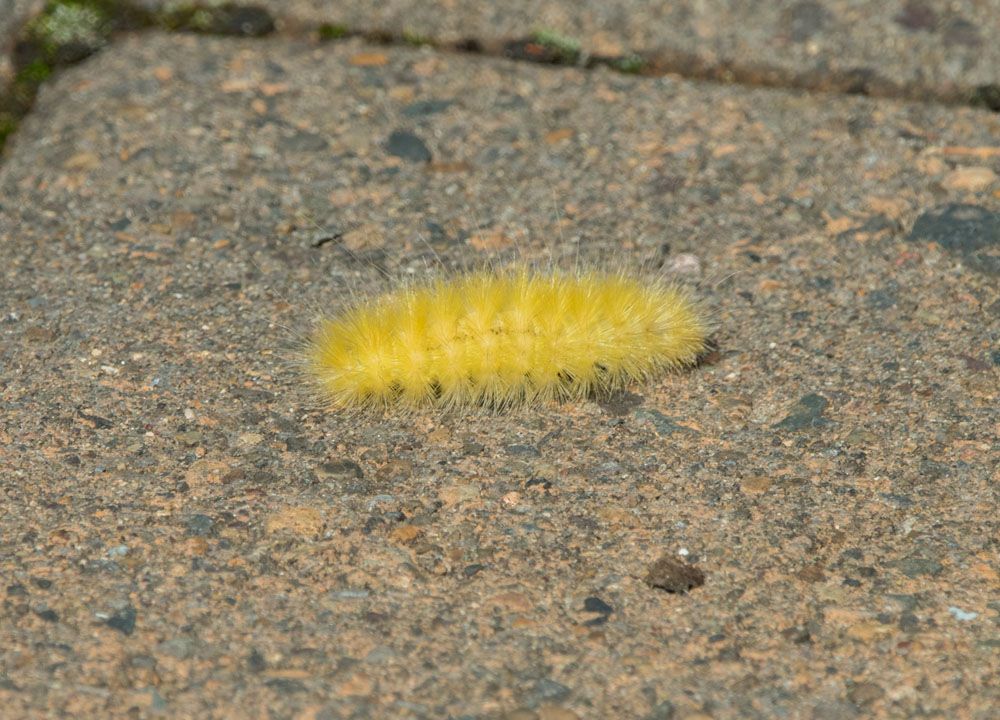
Yellow Woollybear – Spilosoma virginica
Yellow Woolly Bear – Spilosoma virginica
Scientific Name: Spilosoma virginica
Common Name: Yellow Woolly Bear
Distribution: Widespread throughout most of North America.
Host plants: Caterpillars of the yellow woolly bear consume a variety of agricultural, garden, and decorative crops in addition to weeds. Vegetable hosts include radish, rhubarb, salsify, squash, sweet potato, turnip, asparagus, bean, beet, cabbage, carrot, cauliflower, celery, maize, eggplant, onion, parsnip, and pea.
Identification: North America is home to these stunning moths and their caterpillars. The wings of adult moths are nearly entirely white, and their thorax is covered in a stunning layer of white fur. Although the caterpillars might be beige, yellow, dark red-brown, or black in appearance, they are commonly referred to as the yellow woolly bear. The hairy caterpillars are primarily black or yellow in hue, however each species has a different coloring. During the larval stage, their body undergoes around six molts and is composed of thirteen segments.
Adults: Despite being smaller than females, males have bigger, more feathered antennas. The wings are white with black dots when they are open. There are only two of them on the forewings; one is located at the inferolateral cell, while the other is near the wing margins. There are more spots on the rear wings. When closed, the white design remains the same but has less specks on the side and center. They also feature a yellow abdomen with black spots distributed longitudinally, as well as a white head and thorax. Their hind legs are white and black, and their front legs are black and yellow.
Life Cycle: When an adult, the female—which is somewhat bigger than the male—finds a partner by projecting an organ that releases a pheromone that the male can detect. The male flies in zigzag patterns until he finds a female, and unlike the female, he has broad, feathered antennae typical of pheromone-using moths. After mating, the female stops to deposit 20–100 eggs in a single layer on the underside of a leaf, and he leaves to locate other females. When the larvae are little, they remain together, but as they become bigger, they separate.
Damage: Flowers, leaves, fragile stems, and fruit buds are all eaten by caterpillars. Heavy infestations can skeletonize plants. In colonies, young larvae consume the undersides of leaves. Caterpillars spread out and eat on more exposed locations as they get older.
Management: Maintain a weed-free agricultural area. Pick and eliminate larvae by hand.
